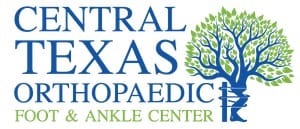Common Diagnoses:
Osteochondral Lesion
Osteochondral Lesion Overview
Osteochondral lesions are injuries to the talus (the bottom bone of the ankle joint) that involve both the bone and the overlying cartilage. They may also be called osteochondritis dessicans or osteochondral fractures. These injuries may include softening of the cartilage layers, cyst-like lesions within the bone below the cartilage, or fracture of the cartilage and bone layers. Throughout this article, these injuries will be referred to as osteochondral lesions of the talus (OLT).
Osteochondral Lesion Symptoms
OLTs usually occur after an injury to the ankle, either a single traumatic injury or as a result of repeated trauma. Common symptoms include prolonged pain, swelling, catching, and/or instability of the ankle joint. Symptoms can be vague. After an injury such as an ankle sprain, the initial pain and swelling should decrease with appropriate attention (rest, elevation). Persistent pain in spite of appropriate treatment after several months may raise concern for an OLT.
You may feel pain primarily at the lateral (outside) or medial (inside) point of the ankle joint. Severe locking or catching symptoms, where the ankle freezes up and will not bend, may indicate that there is a large osteochondral lesion or even a loose piece of cartilage or free bone within the joint.
Osteochondral Lesion Diagnosis
Foot and ankle orthopaedic surgeons diagnose OLTs with a combination of clinical and special studies. Your surgeon may have a suspicion that you have this type of injury from the history you provide and their physical examination. Imaging is necessary to confirm the diagnosis. Occasionally, regular X-rays can show an OLT but frequently additional imaging is needed, such as a CT scan or an MRI.
Osteochondral Lesion Treatment
Other lesions may be more appropriately treated with surgery. The goals of surgery are to restore the normal shape and gliding surface of the talus in order to re-establish normal mechanics and joint forces. The hope is to minimize symptoms and limit the risk of developing arthritis.
Depending on the characteristics and location of the OLT, surgery may done arthroscopically or by opening the skin. Arthroscopy uses a camera and small instruments to view and work within the joint through small incisions. It may not be possible to properly treat certain lesions arthroscopically due to the size or location of the lesion. Treatments may include debridement (removing injured cartilage and bone), fixation of the injured fragment, microfracture or drilling of the lesion, bone grafting the bone cyst below the cartilage, and/or transfer or grafting of bone and cartilage. You and your foot and ankle orthopaedic surgeon can discuss these treatment options and decide which one is best. Often, there may be several treatment options.
